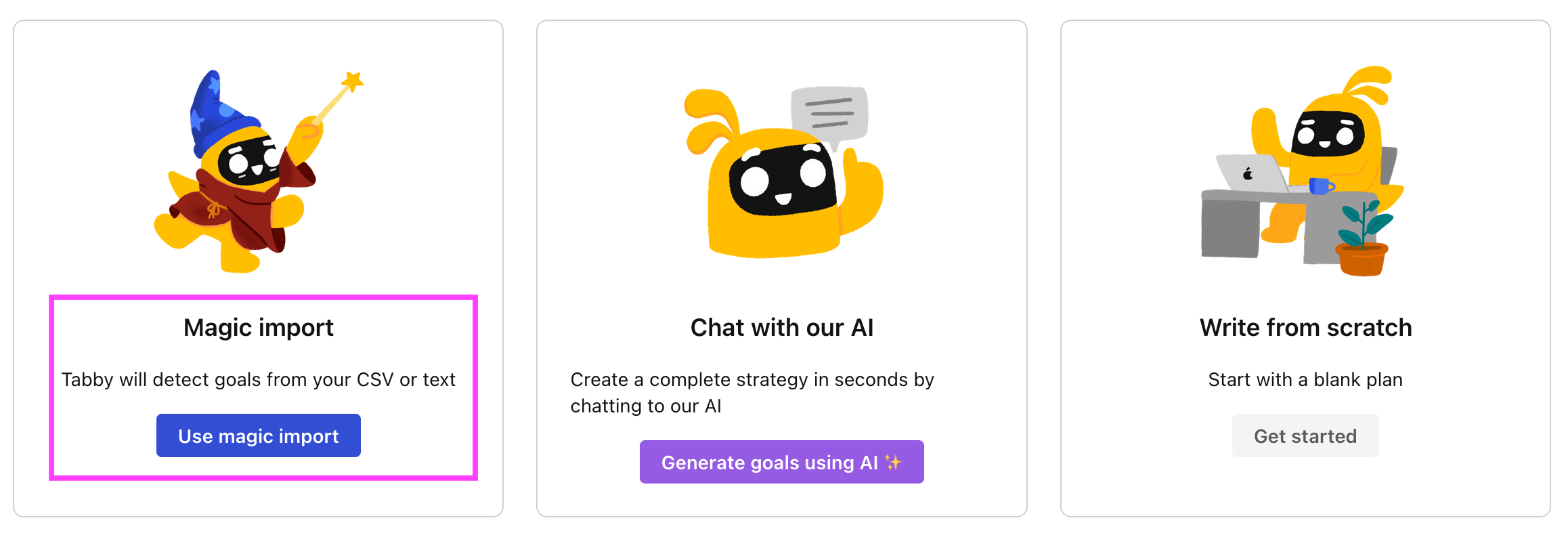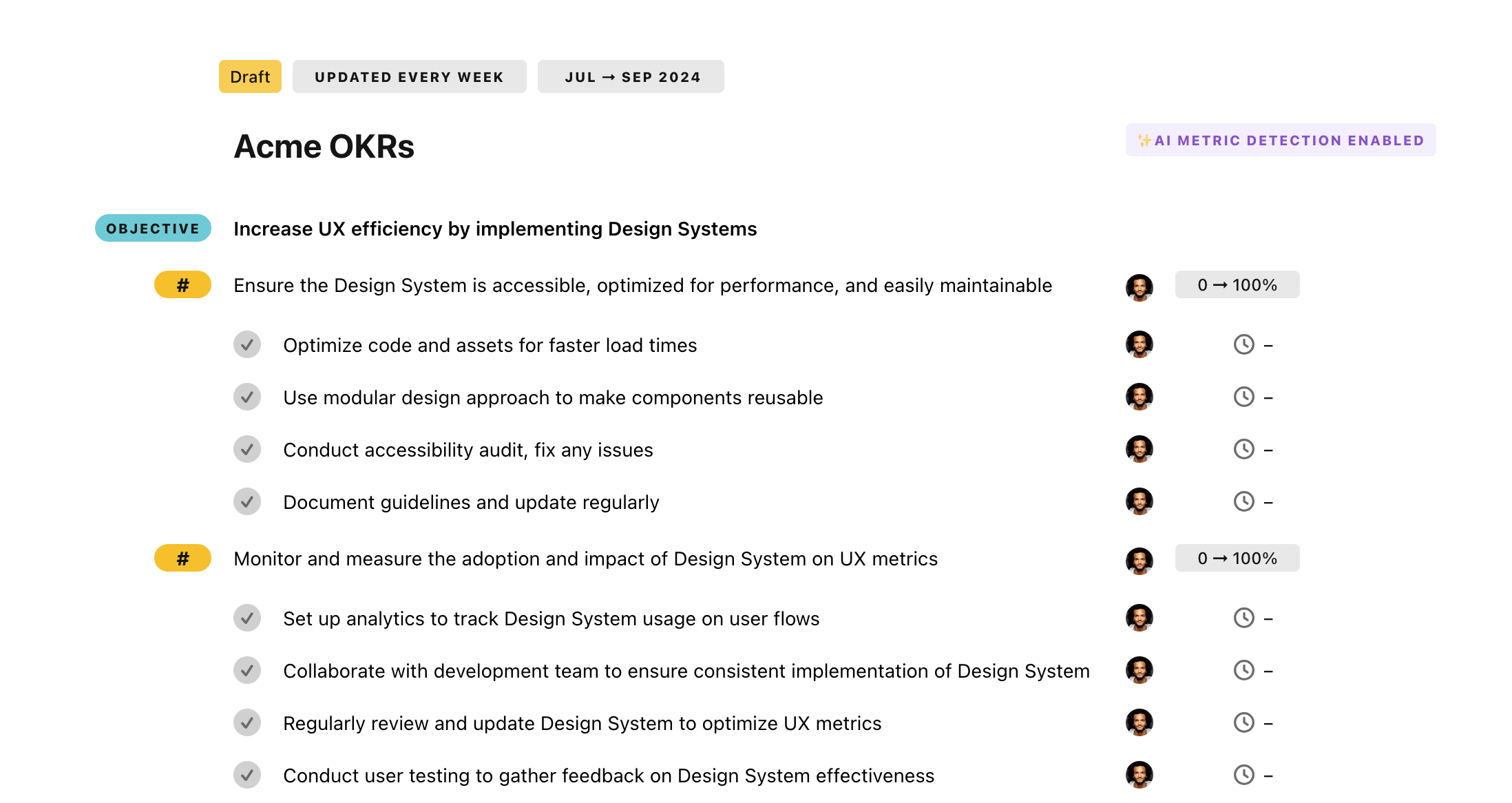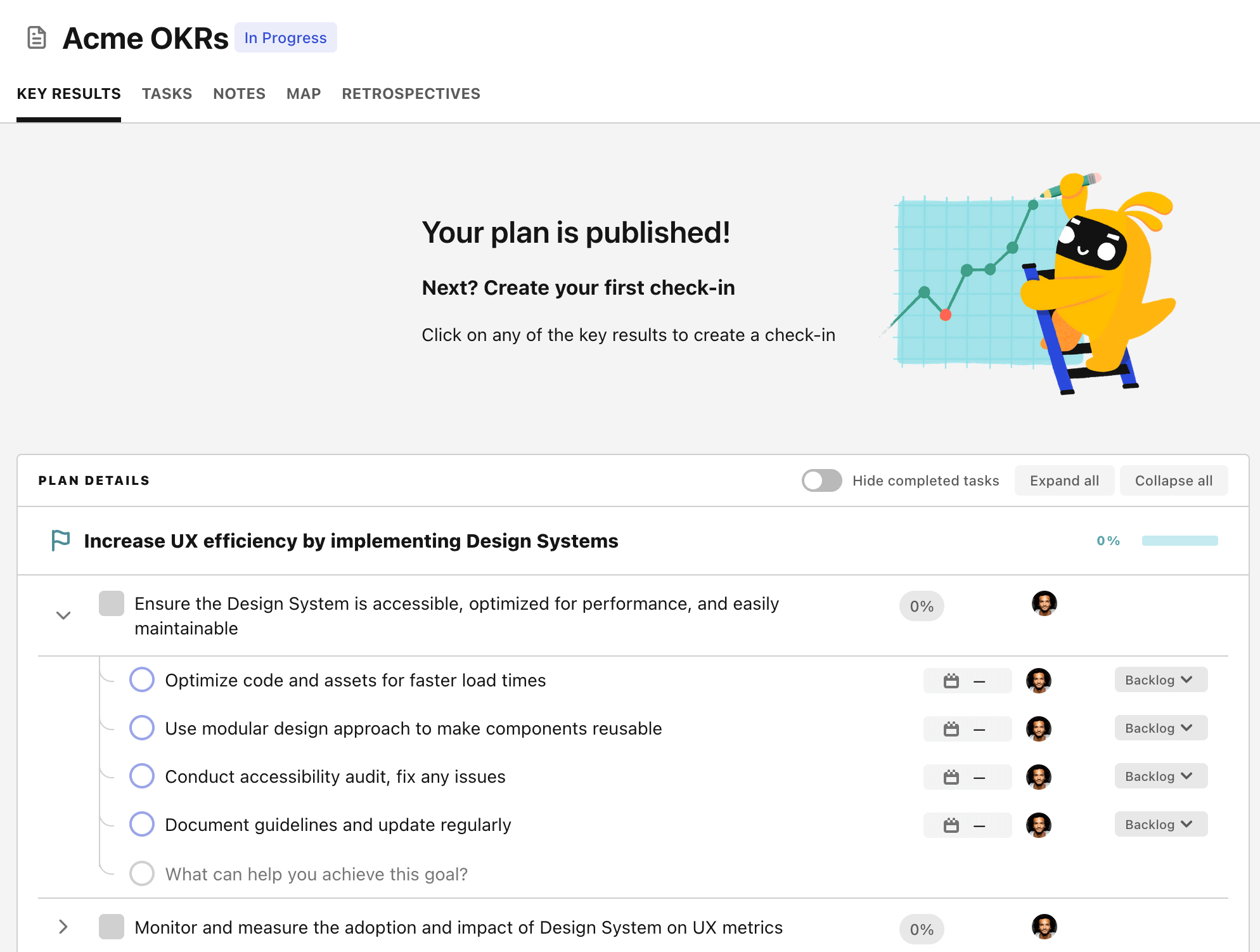OKR template to boost overall company revenue
Your OKR template
The second outcome targets a 25% increase in sales over the previous quarter. The initiatives for this aim to improve customer service for repeat purchases, adopt an aggressive cross-selling and upselling strategy, and launch targeted marketing campaigns.
The third outcome focuses on decreasing operational costs by 10%. The approach to achieve this includes negotiating lower prices with suppliers, streamlining processes to increase staff productivity, and implementing energy conservation measures to reduce utility bills.
In summary, the OKR methodology shared here revolves around revenue growth, sales increase, and cost reduction. Each outcome alongside its initiatives guides the company's focus and action plans.
ObjectiveBoost overall company revenue
KRRoll out 2 new revenue-driving products or services
Train staff on product details and selling techniques
Develop comprehensive marketing strategy for each new product or service
Launch customer awareness and engagement campaigns
KRIncrease sales by 25% over previous quarter
Improve customer service to boost repeat purchases
Implement an aggressive cross-selling and upselling strategy
Launch a targeted marketing and advertising campaign
KRDecrease operational costs by 10%
Negotiate lower prices with suppliers
Streamline processes to increase staff productivity
Implement energy-saving measures to reduce utility bills
How to edit and track OKRs with Tability
You'll probably want to edit the examples in this post, and Tability is the perfect tool for it.
Tability is an AI-powered platform that helps teams set better goals, monitor execution, and get help to achieve their objectives faster.
With Tability you can:
- Use AI to draft a complete set of OKRs in seconds
- Connect your OKRs and team goals to your project
- Automate reporting with integrations and built-in dashboard
Instead of having to copy the content of the OKR examples in a doc or spreadsheet, you can use Tability’s magic importer to start using any of the examples in this page.
The import process can be done in seconds, allowing you to edit OKRs directly in a platform that knows how to manage and track goals.
Step 1. Sign up for a free Tability account
Go tohttps://tability.app/signup and create your account (it's free!)
Step 2. Create a plan
Follow the steps after your onboarding to create your first plan, you should get to a page that looks like the picture below.

Step 3. Use the magic importer
Click on Use magic import to open up the Magic Import modal.
Now, go back to the OKR examples, and click on Copy on the example that you’d like to use.

Paste the content in the text import section. Don’t worry about the formatting, Tability’s AI will be able to parse it!

Now, just click on Import from text and let the magic happen.

Once your example is in the plan editor, you will be able to:
- Edit the objectives, key results, and tasks
- Click on the target 0 → 100% to set better target
- Use the tips and the AI to refine your goals
Step 4. Publish your plan
Once you’re done editing, you can publish your plan to switch to the goal-tracking mode.

From there you will have access to all the features that will help you and your team save hours with OKR reporting.
- 10+ built-in dashboards to visualise progress on your goals
- Weekly reminders, data connectors, and smart notifications
- 9 views to map OKRs to strategic projects
- Strategy map to align teams at scale